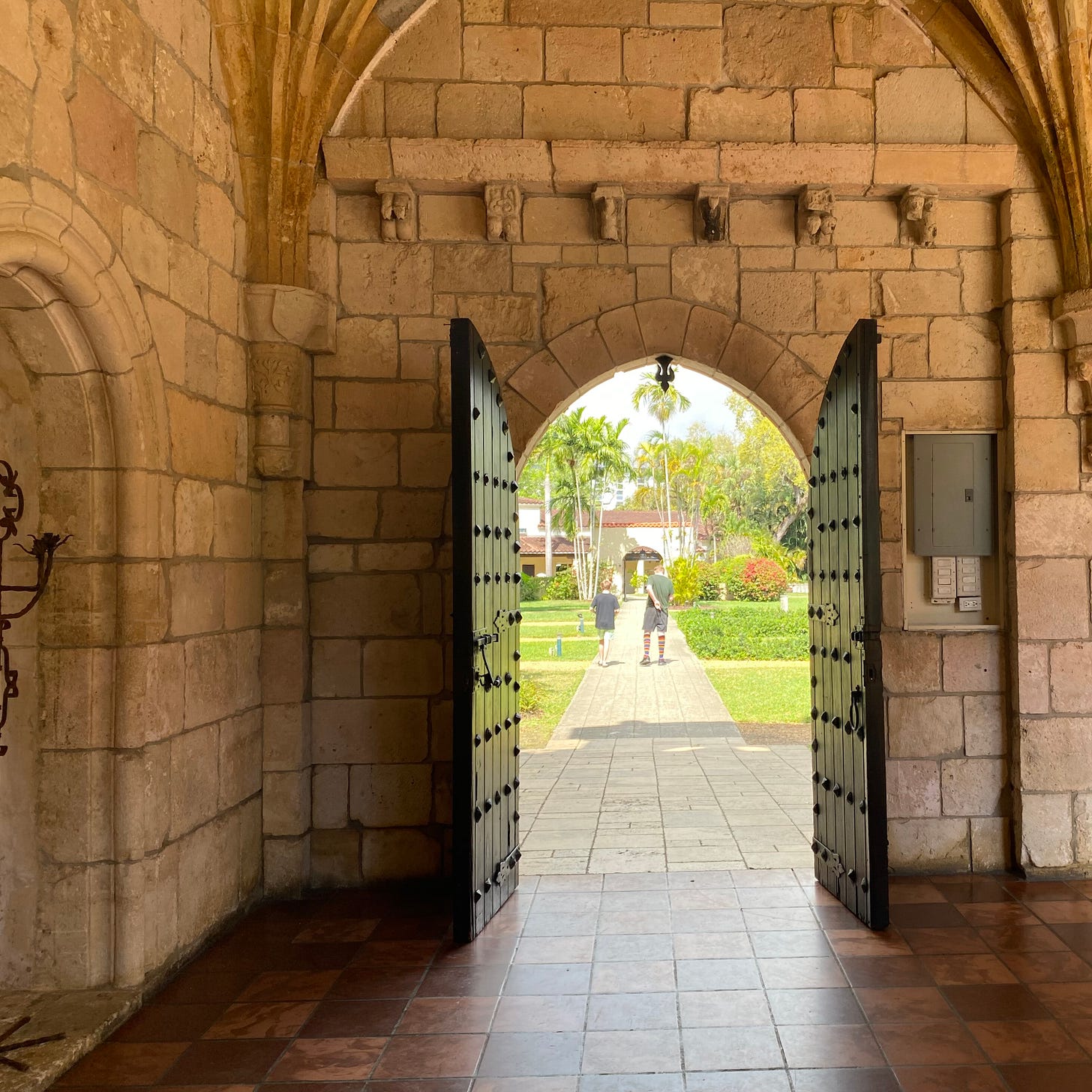March 2025
In 1952 two men got started on what has been called “the biggest jigsaw in history”.
The men were E. Raymond Moss and William S. Edgemon. Time magazine called them “bustling Ohio businessmen”.
What was the jigsaw? It was 11 000 crates of blocks - more specifically, every stone block that had once made up the 800-year-old St Bernard of Clairvaux monastery.
The monastery was built in the early 1100s in Segovia, Spain. It was situated 830m above sea level, on a high plateau in a Spanish region known for extreme weather.
For 700 years, Cistercian monks lived in the monastery. They prayed, cooked and slept in it.
I’ve been to Segovia. It’s near Madrid. On the day we visited it was baking hot.
Up on the plateau, I imagine the monks taking refuge from the sun in the stone corridors of the monastery.
Madrid is cold in winter. In the mountains, where the monks were, it would have been icy.
In 1830, after 700 years of being a monastery, the cloisters were seized and sold off to be used as a granary and a stable.
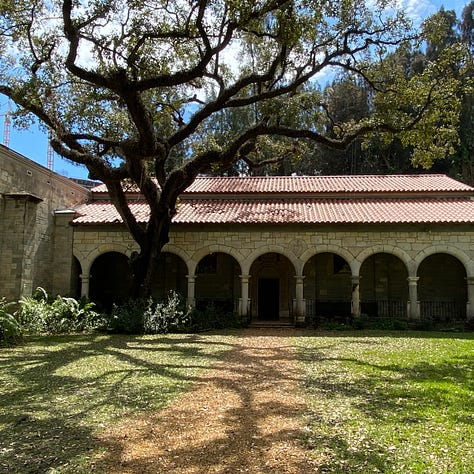
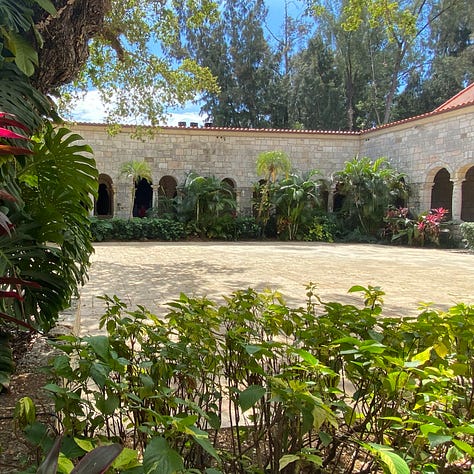
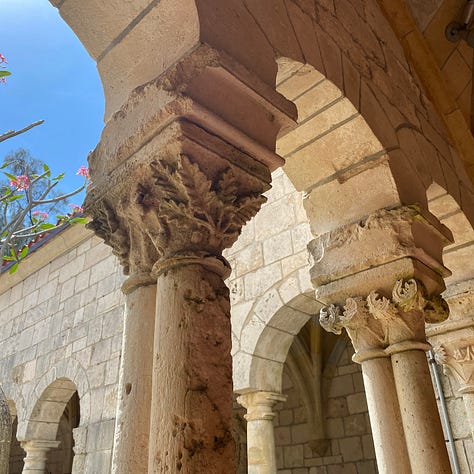

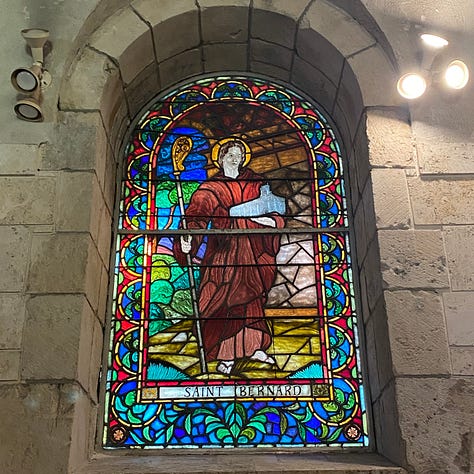
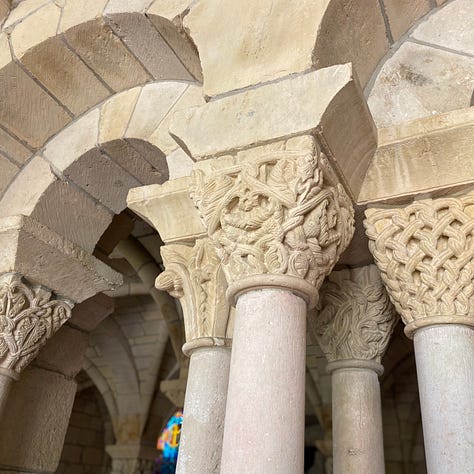

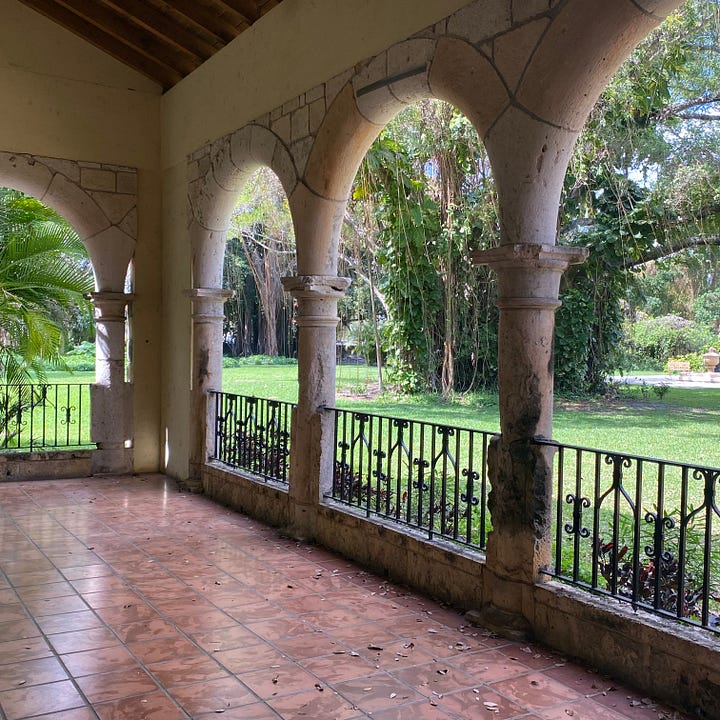
Back to the jigsaw.
You’ve probably heard of William Randolph Hearst. He was, in a word, energetic. Hearst created a chain of 30 major American newspapers. In the mid-1930s, he was selling 30 million papers a day.
Hearst was into politics too. He was twice elected to the US House of Representatives. He unsuccessfully ran for president in 1904, Mayor of New York City in 1905 and 1909, and Governor of New York in 1906.
(Hearst is the subject of Orson Welles’s 1941 mocking film, Citizen Kane.)
On a certain day in the early 1920s, Hearst decided to buy the St Bernard of Clairvaux Monastery and have it shipped to the USA.
He wanted it to be rebuilt in the grounds of his home, San Simeon.
The 1926 sale was illegal.
Nonetheless, the monastery was dismantled, block by block. Each block was numbered, wrapped in hay, and crated. The block numbers were written on the 11 000 wooden crates. Instructions on how to rebuild the monastery were written on paper.
The crates were shipped. They arrived in New York.
When the shipment docked, US officials placed the crates in quarantine. There had been a breakout of hoof and mouth disease in Segovia.
There was some concern that the hay filling in Hearst’s crates might harbour the disease. As a result, the crates were opened and the hay filling was burned.
During the repackaging, the contents of the crates were not replaced correctly.
Hearst had paid a great deal for the building, the dismantling, the packing, the shipping and storage. When he heard how much it would cost to rebuild the monastery – and now in financial difficulties because of the Great Depression – Hearst abandoned his plan.
The crates languished in a warehouse in Brooklyn, New York for a quarter of a century.
In the early 1950s, Moss and Edgemon, our “bustling Ohio businessmen”, entered the story. They bought the crates and had them moved to a small plant nursery in northern Miami.
Their idea was to re-erect the cloister, the chapter house and the refectory – and then charge tourists to view an “Ancient Spanish Monastery”.
It took a team of stonemasons under master mason Allan Carswell 19 months to complete “the biggest jigsaw in history”.
Some of the paper plans had been lost during the quarantine period; blocks were miscrated. Also, Carswell’s bosses, Moss and Edgemon, decided to add bits and pieces to the building from other churches.
It cost the Cincinnatti, Ohio, men $1,5 million.
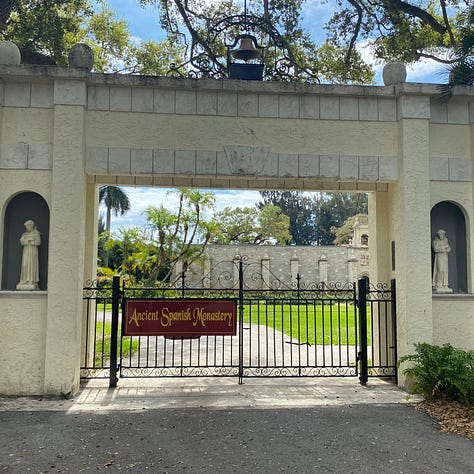

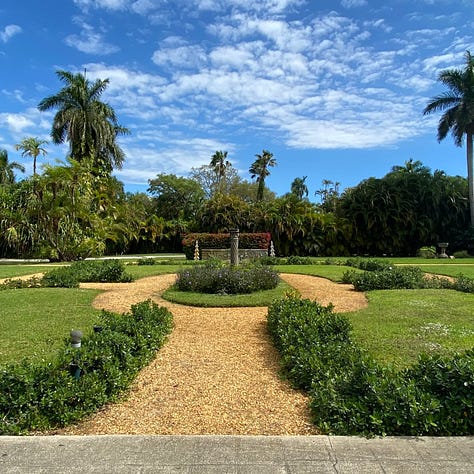
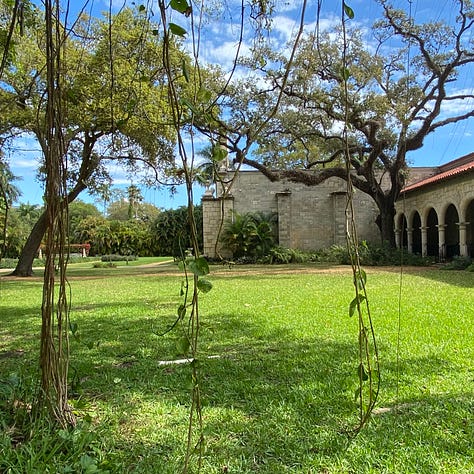
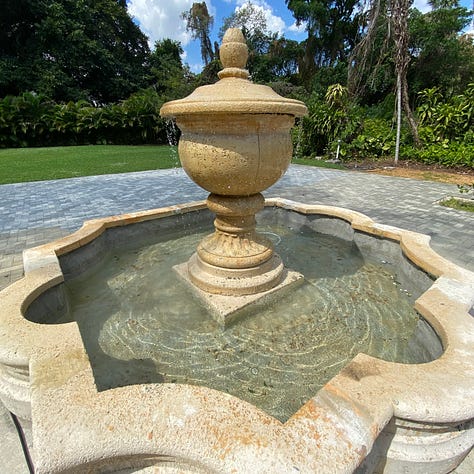
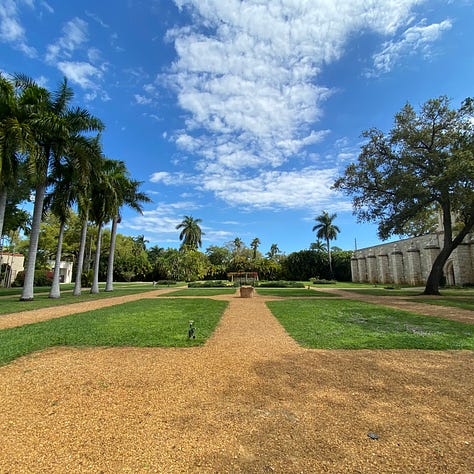
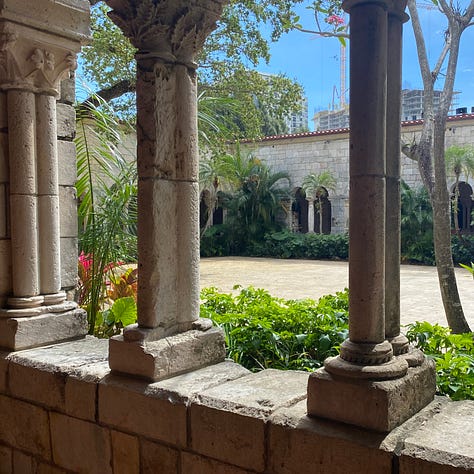
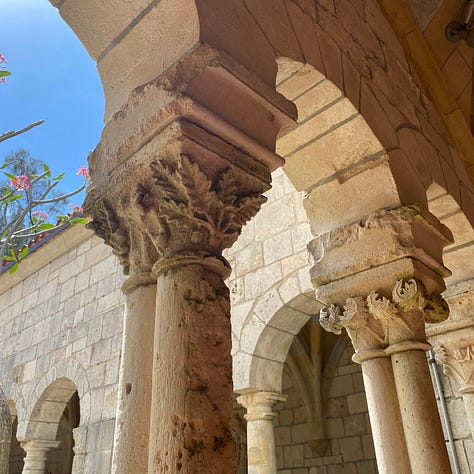
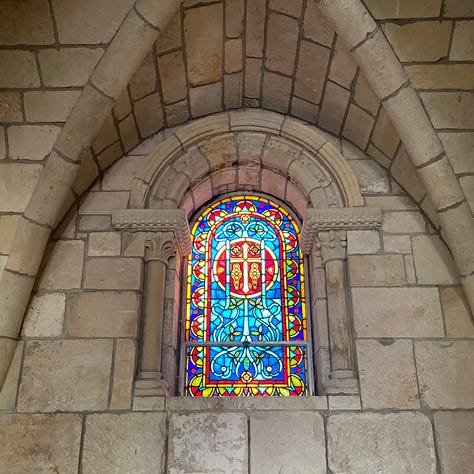
Formal gardens were designed to surround the buildings. The plans were drawn up by members of the church to be reflective of those found in Spanish monastic gardens.
As a tourist attraction, “Ancient Spanish Monastery” was a failure.
In 1964, Moss and Edgemon sold the buildings and property to Colonel Robert Pentland, Jr, a wealthy banker, philanthropist and benefactor of many churches.
These days, the cloisters - still known as “Ancient Spanish Monastery” - attracts 50 000 visitors a year. It operates as an active Episcopal (Anglican, Church of England) congregation, and is a venue for weddings, quinceaneras (Latin girl's 15th birthday) and photo shoots.
Part of Ace Ventura Pet Detective (1994) was filmed in the grounds. The monastery and its gardens has also been a backdrop in Rock of Ages (2012) and music videos for Cristian Castro and Natalie Jiminez.




